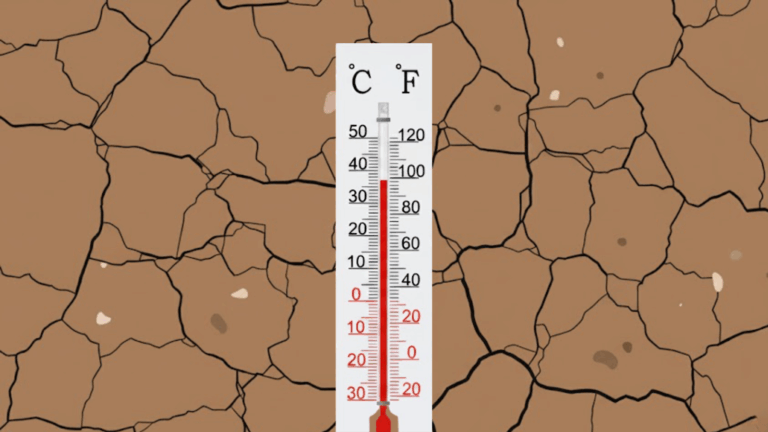Could a strategic lithium reserve kickstart US supply chain development?
NEW YORK -- A strategic lithium reserve is being mooted as a solution to stabilize volatile prices that have hindered American mining projects, allowi
Current Access Level “I” – ID Only: CUID holders, alumni, and approved guests only
Secretary General, International Military Council on Climate and Security
Sherri Goodman: In my first job working on the Senate Armed Services Committee for Chairman Senator Sam Nunn, I had oversight of the Department of Energy’s Nuclear Weapons Complex. These are the nuclear reactors and processing facilities that produced the fissile materials, the plutonium, tritium, and uranium that goes into bombs. And during my first year on the committee, all of those plants failed for environment safety and health lapses. And then I say my career went from weapons to waste.
Bill Loveless: Back in 2012, the Department of Defense issued its first ever climate change adaptation roadmap. It was designed to prepare the U.S. military for increasing threats to national security in the form of rising sea levels, increasing global temperatures and growing conflicts over basic resources like food and water. It stated that climate change is expected to play a significant role in the DOD’s ability to fulfill its mission in the future. Fast-forward to today, and Sherri Goodman says The Department of Defense now sees combating climate change as central to its mission. Sherri was appointed the first ever deputy undersecretary of defense focusing on environmental security. One of her first assignments was the cleanup of nuclear weapons development and production sites, and in 1998, she helped develop the military’s first climate change plan focused mainly on reducing emissions. In her new book, Sherri explains how far the military’s approach to climate change has come over the past 25 years. So how does The Pentagon define the global security risks associated with climate change? What are the department’s clean energy targets and is it on track to meeting them?
This is Columbia Energy Exchange, a weekly podcast from the Center on Global Energy Policy at Columbia University. I’m Bill Loveless.
Today on the show, Sherri Goodman. Sherri is Secretary General of the International Military Council on Climate and Security, and a senior fellow at the Wilson Center. She’s founder and former executive director of the Center for Naval Analysis Military Advisory Board, and is board chair of the Council on Strategic Risks, which includes the Center for Climate and Security. I talked with her about her latest book, Threat Multiplier: Climate, Military Leadership, and the Fight for Global Security. I hope you enjoy our conversation. Sherri Goodman, welcome to Columbia Energy Exchange.
Sherri Goodman: Delighted to be with you, Bill.
Bill Loveless: Well, it’s great to have you here with this book that’s just out, an important one, a timely one, and look forward to discussing it. You begin the book with a quote from U.S. Secretary of Defense, Lloyd Austin. He says, “Today, no nation can find lasting security without addressing the climate crisis. We face all kinds of threats in our line of work, but few of them truly deserve to be called existential. The climate crisis does.” It’s a striking statement, one that you say you would have been hard-pressed to hear from a military leader when you went to work at The Pentagon 30 years ago. What do you mean by that?
Sherri Goodman: Well, Bill, what I mean is that 30 years ago, climate change was not on our radar as a major threat to national security and global security. And today it is, and that’s what Secretary Austin and was making clear, that today climate acts as what I call a threat multiplier to accelerate instability both in fragile regions of the world and even in stable regions. We see rising tensions from rising seas, melting ice caps, increased stronger storms, rising sea levels, changing temperatures, all of that instability in our natural systems is disruptive to the stability that we seek through our security efforts.
Bill Loveless: And I want to get into that more because you discussed this so effectively in the book, but the book includes endorsements for many prominent people in the defense and political world like John Kerry, former NATO Supreme Allied Commander, James Stavridis, and former Secretary of Defense, Leon Panetta. It’s important to note as well your dedication of the book to your parents and grandparents whose decision to leave Nazi Germany made everything possible, you say. How did they inspire the book?
Sherri Goodman: Well, thank you very much, Bill. So my parents fled Germany in the late 1930s. They were among the fortunate few Holocaust refugees to make it to America. And I was raised to believe that we always had to be very thankful for what the United States had provided for us and for having a safe home and a safe haven, and that we need to give back. So I have devoted my life to trying to make the world a better place first during the Cold War and now in the climate era.
Bill Loveless: Yeah, yeah. And you certainly have done so. Well, let’s get back to that quote from defense Secretary Austin, the one in which he called climate change the existential threat or an existential threat to the United States’ security. How is the U.S. military responding to this challenge?
Sherri Goodman: Well, it’s responding by mainstreaming the understanding of climate into all aspects of defense strategy, policy plans into programs, into a major effort in climate literacy throughout the Department of Defense and into transitioning energy systems to achieve net-zero. So it’s a combination of mitigating emissions, but doing so in a way that better meets the military mission. Also, understanding how climate is going to act as a threat multiplier where we need to operate around the world and ensuring our troops are prepared to operate in hotter temperatures, colder temperatures in the Arctic, and that we understand how geostrategic conflict intentions are going to change because of things like food and water insecurity growing across, particularly the equatorial regions of the world.
Bill Loveless: I remember some three years ago, The Pentagon released what it billed as its most ambitious blueprint to date on how the Defense Department intended to prepare for risks associated with climate change. At that time, I hosted Richard Kidd, who you mentioned in your book, one of The Pentagon officials behind that report. Goals were set. What sorts of goals have been set and what sort of progress is The Pentagon, is the military making to meeting them?
Sherri Goodman: Great question, Bill. Well, The Pentagon has plans in every major category where climate affects defense. So starting with strategy policy and plans, it’s been conducting a series of war games in every region to understand how climate acts as an instructive force from Latin America to the Indo-Pacific to the Arctic to Africa And that taking that into account in its strategy and operational planning in that region. It’s engaging with allies and partners to build climate security cooperation, a very important area that’s often under-recognized because we can’t do this alone. We need our allies and partners. They are part of the strength of our own national security.
Thirdly, in building resilient infrastructure, there are many bases that are raising their seawalls or providing stronger buildings to withstand either higher winds or higher flood stages. Sometimes after a bad storm occurs, that’s the motivation to build back a climate-resilient base of the future. But all military installations now have plans to have a resilient infrastructure. And then finally, I would say on the energy side, there are major efforts underway to move towards net-zero in energy use as a way both to improve energy resilience, particularly at U.S. bases so that they can operate even if the grid goes down. And then additionally to improve our military performance by advancing and reducing dependence on long supply chains of fossil fuels in contested logistics environments.
Bill Loveless: Well, what’s passed as prologue as they say, right? And I found it interesting in your book to recount your career and how circumstances have changed over the decades. To put things in perspective, take us back to the 1980s when you went to work for the US Senate Armed Services Committee. At the time, was the environment never mind climate change much of a consideration for the military?
Sherri Goodman: No, not at all. We weren’t focused on that, and that wasn’t actually the focus of the early part of my career either. During the Cold War, I wanted to work what on what I thought were the major security challenges of the day, and that was nuclear weapons and arms control and the contest between the United States and the Soviet Union during the Cold War, and in my first job working on the Senate Armed Services Committee for Chairman Senator Sam Nunn, I had oversight of the Department of Energy’s Nuclear Weapons Complex.
These are the nuclear reactors and processing facilities that produce the fissile materials, the plutonium, tritium and uranium that goes into bombs. And during my first year on the committee, all of those plants failed for environment safety and health lapses. And then I say my career went from weapons to waste as we moved from overseeing the production of nuclear materials to putting in place cleanup and environmental management programs for the department, which still are there today. The first major piece of legislation I drafted was to create the defense Nuclear Facility Safety Board, like a mini NRC to provide safety oversight for defense nuclear facilities.
Bill Loveless: Yeah, I covered some of those board meetings over the years, and I remember too during the George H. W. Bush administration, when James Watkins was the Secretary of Energy, he really began to crack down on the cleanup of those nuclear weapons sites. As I recall, he wouldn’t allow the DOE flag to be flown fully or maybe at all unless they had met certain goals for cleanup. It became suddenly, I recall a huge issue for a department whose name is energy, but whose responsibility for weapons and weapons cleanup is quite significant.
Sherri Goodman: Right. Admiral Watkins really tried to instill military discipline and rigor into the oversight of the nuclear weapons complex. He was the first secretary to serve at the end of the Cold War after most of those facilities has been shut down. And his predecessor had said that the nation was awash in plutonium. So a combination of not needing to produce the materials at the end of the Cold War, plus the increase enforcement of environmental laws against federal facilities really were the nail and the coffin and the sign that we really needed to transition to a much more environmentally rigorous state of managing defense facilities.
Bill Loveless: Then you arrive at The Pentagon in 1993, at the age 34, did I get that right?
Sherri Goodman: That’s correct. Yes.
Bill Loveless: As the Deputy Undersecretary of Defense for Environmental Security, it’s the start of the Clinton administration, and of course, cleanup of nuclear weapon sites is a top priority, as we just mentioned. It has been for a couple of years anyway, at that point. What did environmental security entail at that time in that job?
Sherri Goodman: Right, Bill. Well, the Clinton administration, President Clinton and Vice President Gore were very focused on mainstreaming environmental awareness across U.S. government actions at the time, and in the Department of Defense environmental security meant recognizing the need to provide environmental protection to our people and at our facilities here at home, but also to integrating environmental awareness and sound environmental practices into our work with allies and partners and even former adversaries at the end of the Cold War. There are really three parts of environmental security in that era. The first was cleaning up at military bases. We were closing many military bases in that era, and so we had very active programs to address the contaminants at those Superfund sites and to work in partnership with the environmental regulators, both EPA, the federal and the state regulators and with local communities. It was a very broad-based outreach and open door policy to try to improve conditions for communities, military and families nationwide.
Secondly, it was a focus on the natural resources that are inherent part of the stewardship responsibilities of the Department of Defense as the largest landholder. In the United States, there are many endangered species and fragile ecosystems on military bases. As, for example, the red-cockaded woodpecker, which makes its home in the longleaf pine found extensively in the southeastern United States, and particularly on military bases from North Carolina to Florida. And the Army had found itself with training stopped by failure to protect the endangered red-cockaded woodpecker at one point and had to figure out how to do so and still managed training. So it learned that rather than cutting down the tree where the red-cockaded woodpecker makes its nest, it could use the tree as a realistic training obstacle. So the Marines at Camp Lejeune and the Army at Fort Bragg now called Fort Liberty changed their training practices and found that they could, as the Marine Corps said, save a few good species as well.
So that was an example of the first year of natural resource protection and awareness. And thirdly, it was about working internationally with our allies and partners. At the end of the Cold War, we were trying to get nukes out of the Soviet Union, the former Soviet states. And that was not only nuclear weapons, but it was also the fissile materials in the nuclear weapons. And in particular, I helped create and run a program called Arctic Military Environmental Cooperation, where we were finding ways to safely manage the liquid waste streams from decommissioned and sunken Russian submarines in the Kola Peninsula whose releases the Norwegians thought would contaminate their fishing grounds.
And so the Norwegians and the U.S. helped develop a cask to safely offload those liquid waste streams rather than let them leach out and potentially cause contamination of those fishing areas. And in addition, we were sharing environmental lessons and practices, good stewardship practices and ethical environmental principles with militaries around the world. I spoke at Russian military academies in that era. We had the first generation of defense environmental security conferences, bringing together the COCOM commanders, the Pacific commanders such as General Wes Clark was at SOUTHCOM at the time, General Zinni at CENTCOM, Admiral Prueher at PACOM and many others to bring together the defense and environmental leadership of that era.
Bill Loveless: Yeah, it was a remarkable time, huh? After the fall of the Berlin Wall and the collapse of the Soviet Union where there was a cooperation that was taking between the United States and Russia on these issues and nuclear weapons on fissile materials. Such a contrast to what we see today.
Sherri Goodman: Yes, unfortunately, that era has passed. I mean, we were even sharing overhead images that we had each collected on each other’s bases through something called the Environmental Working Group of the then Gore-Chernomyrdin Commission led by Vice President Gore and his Russian counterpart. And so we shared images we had of contamination at a Russian military base, and they showed us what they knew about England Air Force Base in Florida.
Bill Loveless: Interesting. Well, at that time, you’d also become the person charged with crafting the defense Department’s strategy and climate change. What was that like and how did you try to balance the defense and environmental prerogatives of The Pentagon?
Sherri Goodman: Right. Well, that was really the first era of trying to understand what climate change would mean for military activities. And it was really before we understood the security implications of climate change, where we thought of it as primarily an energy management and use of energy issue and how to manage the emissions. And so our focus then was on, as we understood it at the time, how could we both reduce emissions and develop strategies for accounting for emissions? So it was really the first year where we began tracking emissions. In that era, we actually were closing a lot of military bases, so we had the benefit of reducing emissions just by the fact that our facilities’ infrastructure was being reduced. And that’s when we began to understand that what we call operational energy, which is what we use when we fly fighters and steam ships and drive tanks, but mostly in fighters, most of the energy use is for aircraft in the military.
So we needed to ensure that the military could continue to operate without impairment as we understood at the time and that we could also still be good stewards. So it was interesting because it’s really changed now since then and because now both we understand the security implications of climate change, and we have goals and objectives for net-zero. And we also know that improved military performance today does not necessarily mean more fossil energy. In that era of the mid to late-nineteen nineties, we had not broken that Gordian Knot between improved military performance and fossil fuels. Every time we built something that was faster or performed better, it meant more. And think of the Abrams tank, which gets two gallons per mile. They talk about tanks as basically an oil spill waiting to happen, but that’s not true anymore. Today we are in an era where hybrid electric vehicles not only have better torque, but they’re quieter. So there are actually performance benefits on the battlefield of transitioning to newer sources of energy.
Bill Loveless: Yeah, you write quite effectively about that in the book, what you refer to as less fuel, more fight, and it’s become a critical consideration of the US military. We saw that, as you note during the wars in Iraq and Afghanistan, the risks associated with transporting fuel to fighting men and women. And you note that there are also the tremendous cost savings associated with addressing these challenges. While we’re on that topic, I’m thinking biofuel blends are not new to the U.S. Navy and Air Force. They’ve been experimenting with them for years. How far has the military gone in reducing its reliance on fossil fuels?
Sherri Goodman: It’s making good progress, but it’s not going to be instantaneous. It’s looking at blended biofuels, but it’s also looking at hybrid electric vehicles. It’s looking at sustainable aviation fuels, even while it’s looking to change up the design of aircraft through something called the blended body wing that can provide 30% better performance, even with the same fossil fuels reduced by 30% with less aerodynamic drag. So I say we have to walk and chew gum. We can find renewables that we can use to remotely power some of our remote logistics bases. That’s going to be more effective than trucking fuel to the front as we found in Iraq and Afghanistan where military convoys, 8 out of 10 of them were trucking fuel and water and ammunition, putting soldiers driving those trucks at risk of being blown up by improvised explosive devices. We want to avoid that risk to our soldiers and Marines by finding ways not to have to drag long logistics tails to the front.
And that means better batteries, deployed renewables, long duration storage. It means thinking differently about what kinds of unmanned systems we can use. Now we’re in the era of drones and unmanned systems. So much of that also helps avoid that. But operating in what we call these contested logistic environments in the future, whether it’s on land or in the maritime domain, which we anticipate if we fight ourselves in the conflict with China, we also don’t want to have long fuel supply lines there. So there are all sorts of reasons to innovate, and that includes hydrogen, that includes potentially nuclear, small modular and micro reactors for deployed or remote bases. And all of this mix and this diversity will provide a better range of energy resilience and energy security.
Bill Loveless: Getting back to your career path, you left The Pentagon in 2001 at the start of the George W. Bush administration and joined the Center for Naval Analysis where you worked with retired military leaders who saw that climate change would become a critical factor for national security in coming years. What brought about that thinking with those former soldiers?
Sherri Goodman: Well, thanks, Bill. Yeah. In 2006, I organized the first group of generals and admirals to assess the national security implications of climate change. And they and others, we started out almost as skeptics on this subject. We didn’t necessarily understand the science of climate well enough to understand its impact on security. But we spent a year of study with the nation’s leading climate scientists and with intelligence and national security professionals. And by the end of that year, we could see that in every region of the world, climate would act as a destabilizing force.
And so in 2007, we released the first report on this subject called National Security and the Threat of Climate Change. And that’s where I coined the term threat multiplier for that report to help convey that. And these approximately dozen generals and admirals shared their own experiences on the front lines of seeing how climate was going to be disruptive in each theater of the world, each region of the world, or in their own service, where they had experienced how a changing climate would affect both how they deploy their forces and how they protect their people and geostrategic conflict.
Bill Loveless: And that term threat multiplier has become part of the discussions that take place on military, per all the studies you see today of energy security and national security.
Sherri Goodman: Yes. And it’s led to the creation of the Center for Climate Insecurity, which I helped to found some years later, which is now one of those organizations carrying this forward and now an international military council on climate insecurity, which I co-chair with the former Dutch Chief of Defense General Tom Middendorp, who himself has written a book called The Climate General, which I also recommend to your readers.
Bill Loveless: Interesting. Well, you also take us around the world to illustrate the impacts of climate change to the national security of the United States and other nations, and including the Arctic, Africa, Asia, and South America. Give us a couple of examples of how the instability associated with climate change poses national security challenges.
Sherri Goodman: Sure. Well, let’s start in the Arctic where temperatures are rising approximately four degrees above normal averages. And we’ve just gotten the annual 2024 sea ice Arctic Report Card where sea ice has retreated even further than the previous year. So every year now, for almost the last 20 years, we’ve seen smaller and smaller ice cover at the top of the world. And what this means is an increasingly open ocean where President Putin eyes a northern sea route as a toll road for transportation from ports in Asia to ports in Europe, and is now even sending non-ice clad vessels across to move that oil, which it really wants to extract before its oil and gas become a stranded resource. And oh, by the way, remember that Senator John McCain once called Russia a gas station with nuclear weapons. So we have that view from Russia as the Arctic nation with the longest Arctic coastline.
And China envisions itself as a near Arctic power, a near Arctic stakeholder, and sees the potential for shorter shipping routes across the Arctic, and working in collaboration with Russia, both to obtain the energy resources available there, and then to avoid the more treacherous routes we now have in the Straits of Hormuz with the Houthis or the longer shipping routes around Africa. So they’re looking at a strategic future where they can have shorter shipping routes and both access to new energy resources, and potentially even in the future, the fish as fish stocks migrate towards both poles with warmer waters and increased illegal unregulated and ungoverned fishing in the equatorial regions.
So that’s some of the situation in the Arctic. We also have a potentially oil spill or accident waiting to happen as we see more ship traffic, and we know how devastating oil spills can be just in non-Arctic waters. Think back to the Exxon Valdez or Deepwater Horizon in the Gulf. And we don’t have a good understanding, have never had to clean up a massive Arctic transboundary oil spill. So if and when that should occur, that will be a significant challenge.
Bill Loveless: Regarding South America, another of the regions you cover in the book, you recall Admiral Stavridis, I hope I’m pronouncing that correctly.
Sherri Goodman: Yes.
Bill Loveless: Who headed the U.S. Southern Command as well from 2006 through 2009. He saw a significant rise in migration to the U.S. and as he came to understand it, climate change was the catalyst. What did he mean?
Sherri Goodman: Well, the fact that the parts of Latin America, particularly in the fragile regions in Central America, are subject to increasingly strong storms and then followed often by drought, they have fragile governance, they suffer then from growing food and water insecurity. And when people can’t feed their families and provide water and health and safety for their people, they go on the move. And that’s what’s driven a lot of the migration. Also, agricultural loss. These are highly agricultural reasons. The coffee crop has also suffered mightily from disease, and many of the agricultural crops are not climate resistant.
So this has become a catalyst for conflict, as we say, driving populations to move northward both in Mexico and our own country. And we see a similar set of circumstances playing out across parts of Africa where communities, for example, in Somalia and other places lived peaceably before between farmers and herders. But as there’s less arable land, less water that drives people into the more urban areas where there’s often not enough work, particularly for the young male youth, then they become attracted by terrorist recruitment groups such as ISIS and al-Qaeda. So we find that climate change acts as one of, our Admiral said as a Petri dish for terrorism.
Bill Loveless: Of course, the national security challenges occur not only outside U.S. borders, but within them as well. We see this in the risks to naval bases posed by rising waters, as you mentioned before, and extensive deployment of National Guard members to help fight wildfires. Tell us about those risks.
Sherri Goodman: Right. Well, we’ve seen almost a tenfold increase just over five years in the number of National Guard having to respond to wildfires, mostly in our West. So now the head of the National Guard says it’s fire season year-round. And those who live in those affected areas, of course, are deeply grateful that our National Guard is available to help support our very dedicated local firefighters and our first responders. But the increasing intensity of wildfires, of storms, of floods have meant that our military are more frequently deployed now to support responses that we need here at home to protect Americans.
Bill Loveless: And the Navy bases, of course. You mentioned those in Virginia, which are especially at risk of rising waters, we see this elsewhere as well. You say there are steps being taken to mitigate the impact or adapt rather to the effects of those rising waters and those storms on those facilities.
Sherri Goodman: Yes, as we say, a crisis is a terrible thing to waste. And so when Hurricane Michael hit Tyndall Air Force Base in the Panhandle of Florida in 2018 and ripped the roofs off the hangars for the F-35, that base is now being built and was damaged to the tune of $5 billion. And now being built to the tune of that of more to become the Air Force’s climate-resilient base of the future, and it will have stronger hangars and better buildings. It will have generators that won’t be subject to the same types of conditions that caused power outages and damage before. So that’s happening at bases around the country at Norfolk, the largest naval base in the world, also home to a NATO headquarters. There’s sunny day flooding that occurs just because sea levels have already risen and storm surge and coastal inundation mean that sometimes people can’t get from home to the base. So sea walls are being developed and piers are being lifted and natural as well as built infrastructure is being strengthened to enable that region still to provide the mission-critical services it offers to the nation.
Bill Loveless: Well, Sherri, you point out the steps that are being taken by the military to address the challenges of climate change and the understanding that’s developed at The Pentagon and among the military services over the years in response to this phenomenon. What areas do you see as requiring still much more attention by The Pentagon, by the military in response to global warming?
Sherri Goodman: Well, really, every area continues to need attention. As good as the progress has been, the pace of climate change is accelerating beyond our ability as a society to keep up with it. So in every area of climate action, we really need to continue, what we would call in the military, a high operational tempo. And I’ll just sort of mention the kind of four areas I see as the ones of focus. The first is we have to improve our predictive capabilities to better understand at the localized level how the climate is changing so that we can make realistic decisions within budgets that target the specific needs and address the risks, whether it’s to planning a military deployment or to protecting our bases. And that’s what we call climate intelligence.
And there’s a lot of data and analysis and improved modeling and approved systems work that’s going on to provide that extended weather, or we say short-term climate today. Second, we have to invest in our facilities that’s resilient for our bases, but we also have to protect our troops. And so that’s understanding the connections between climate and health as it affects our troops when they deploy in hotter temperatures. Now they have many more black flag days where the wet bulb temperature is above 95 and they can’t safely train. And so we have to change training regimes. We need to change protective equipment and gear and also understand the human dimensions of it. There’s a large health component here.
Thirdly, as we move to net-zero, we have to really keep our eye on the prize of how we make that energy transition. And we say it’s more about the missions than emissions, but it’s about ensuring that the mission can continue while we’re making that transition, and sometimes we actually get better benefits. And then finally, it’s about working with our allies and partners to ensure that we remember that if we can’t have security just islanding our own nation, we have to work with our allies and partners, and they are our greatest asset as we’ve learned in the conflicts we face today. From Ukraine to the Indo-Pacific to Middle East.
Bill Loveless: Well, the book is Threat Multiplier: Climate, Military, Leadership and the Fight for Global Security. Sherri Goodman, thanks for coming on Columbia Energy Exchange to discuss this.
Sherri Goodman: Thank you so much, Bill. It’s been a pleasure to be with you today.
Bill Loveless: That’s it for this week’s episode of Columbia Energy Exchange. Thank you again, Sherri Goodman, and thank you for listening. The show is brought to you by the Center on Global Energy Policy at Columbia University School of International and Public Affairs. The show is hosted by Jason Bordoff and me, Bill Loveless. The show is produced by Tim Peterson from Latitude Studios. Additional support from Lilly Lee, Caroline Pittman and Kyu Lee. Sean Marquand is the sound engineer. For more information about the show or the Center on Global Energy Policy, visit us online at energypolicy.columbia.edu or follow us on social media at Columbia U Energy. If you like this episode, leave us a rating on Spotify or Apple Podcasts. You can also share it with a friend or colleague to help us reach more listeners. Either way, we appreciate your support. Thanks again for listening. See you next week.
Back in 2012, the Department of Defense issued a first-of-its-kind “Climate Change Adaptation Roadmap.” It was designed to prepare the U.S. military for increasing threats to national security in the form of rising sea levels, increasing global temperatures, and growing conflicts over basic resources like food and water. It stated that “Climate change is expected to play a significant role in the DOD’s ability to fulfill its mission in the future.”
Fast-forward to today, and Sherri Goodman says the DOD now sees combating climate change as central to its mission.
Sherri was appointed the first-ever deputy undersecretary of defense focusing on environmental security. One of her first assignments was cleaning up nuclear weapons development and production sites. And in 1998, she helped develop the military’s first climate change plan, focused mainly on reducing emissions.
This week, host Bill Loveless talks with Sherri about her latest book, “Threat Multiplier: Climate, Military Leadership, and the Fight for Global Security.” Sherri explains how far the military’s approach to climate change has come over the past 25 years.
Sherri is secretary general of the International Military Council on Climate and Security and a senior fellow at the Wilson Center. She’s also founder and former executive director of the Center for Naval Analyses Military Advisory Board and is board chair of the Council on Strategic Risks, which includes the Center for Climate and Security.
This has been a crucial year for US energy policy. The passage of the One Big Beautiful Bill Act eliminated many of the clean energy incentives that were...

Over the past week, President Trump has intensified pressure on Venezuelan president Nicolás Maduro by targeting the regime’s economic lifeline—oil. The United States has seized two oil tankers...

If it seems like you're hearing a lot more about geothermal energy lately, that's because this clean, firm energy source is at a technological turning point. With roots...

Investment in clean energy technologies is on course to hit a record $2.2 trillion this year, according to the International Energy Agency. That’s more than twice the amount...
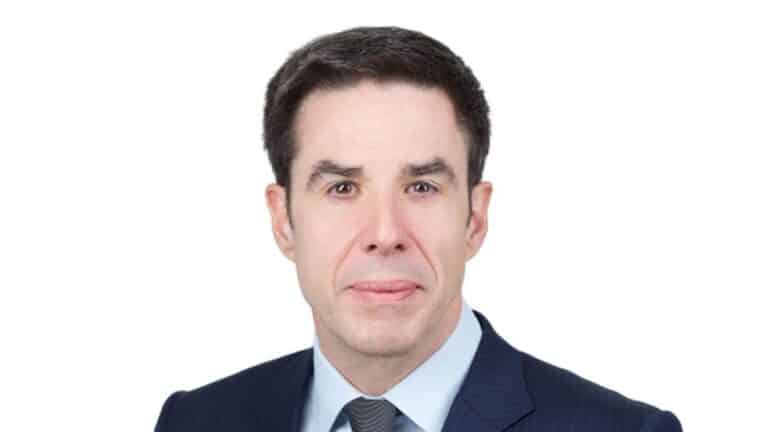
On November 6, 2025, in the lead-up to the annual UN Conference of the Parties (COP30), the Center on Global Energy Policy (CGEP) at Columbia University SIPA convened a roundtable on project-based carbon credit markets (PCCMs) in São Paulo, Brazil—a country that both hosted this year’s COP and is well-positioned to shape the next phase of global carbon markets by leveraging its experience in nature-based solutions.
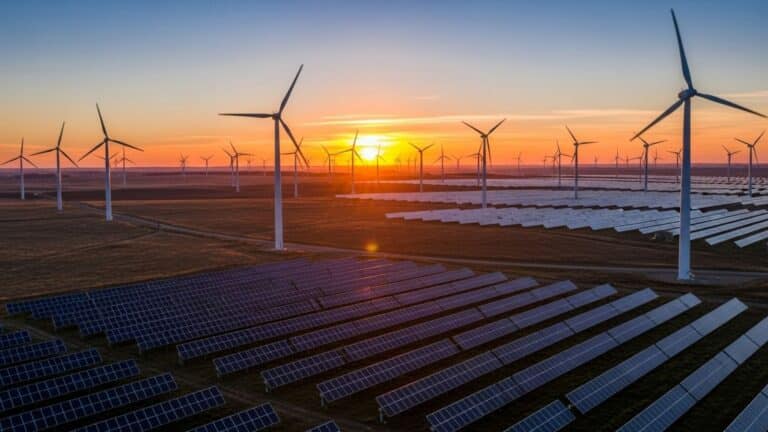
Connecticut needs an honest debate, and fresh thinking, to shape a climate strategy fit for today, not 2022.
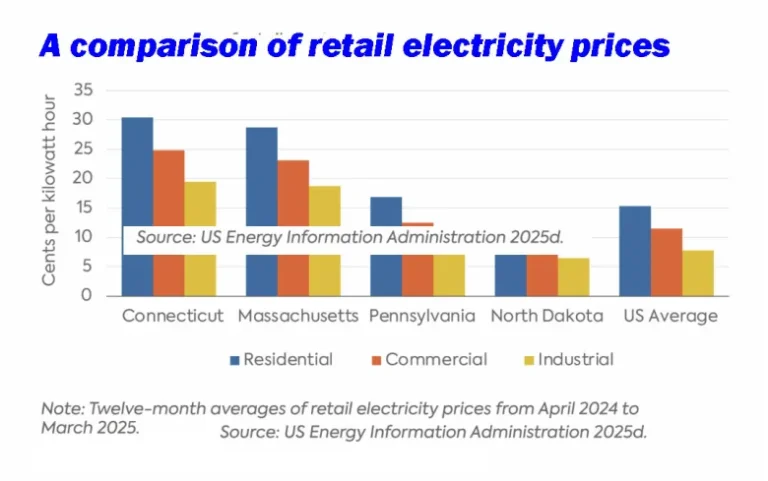
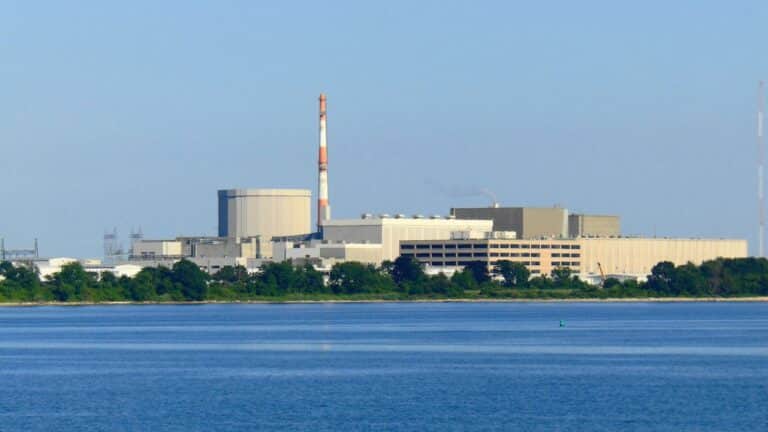
As diplomats meet in Brazil for COP30, global resolve to tackle the climate challenge appears badly frayed.
